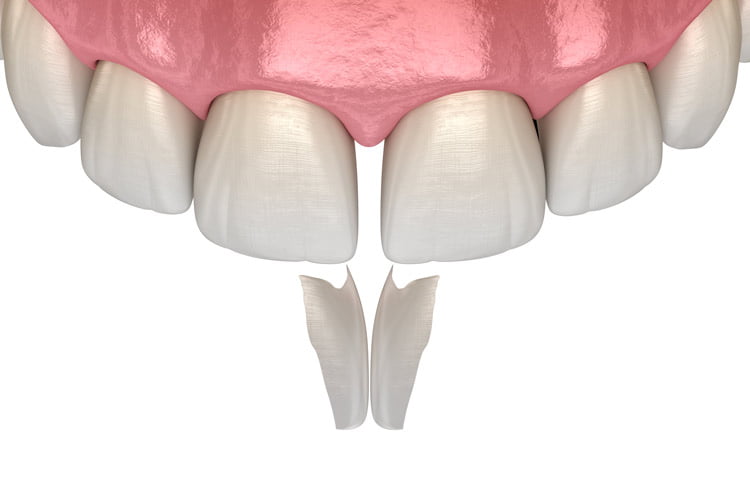Bonding: The Simple Way to Repair and Perfect Your Smile
If you’ve ever chipped a tooth, noticed a gap between your teeth, or wished your smile looked just a little more polished, bonding might be the easy, affordable solution you’ve been searching for.
This non-invasive cosmetic treatment can enhance your smile in just one visit, without drilling, anesthesia, or a hefty price tag. This article will explain dental bonding, how it works, who it’s best for, and how to care for it. Whether you’re looking to fix a slight imperfection or refresh your entire smile, here’s everything you need to know.
What Is Bonding?
Bonding is a cosmetic dental procedure that uses a tooth-colored resin (a type of durable plastic) to repair or improve the appearance of teeth. The material is shaped, hardened, and polished to blend perfectly with natural teeth.
Think of it like sculpting or patching your tooth—quickly and painlessly.
Dentists often use bonding to fix:
- Chipped or cracked teeth
- Gaps between teeth
- Teeth that are too short or uneven
- Discoloration that can’t be fixed with whitening
- Small cavities (as an alternative to metal fillings)
- Exposed tooth roots due to gum recession
It’s called “bonding” because the material bonds to your tooth for a natural-looking result.

What Happens During a Bonding Procedure?
One of the most significant advantages of bonding is its simplicity and speed. Most bonding procedures take 30 to 60 minutes per tooth, and often don’t require numbing, making it a comfortable and convenient option for improving your smile. You can rest assured that your smile can be enhanced quickly and easily with bonding.
Here’s what to expect:
- Preparation: Your dentist will carefully choose a shade of resin that closely matches your natural tooth color, ensuring a seamless and natural-looking result.
- Tooth Conditioning: The tooth’s surface is gently roughened and treated with a liquid to help the resin stick.
- Application: The resin is applied, shaped, and molded to your tooth.
- Curing: A special blue light, often a high-intensity LED or halogen light, hardens the material in seconds.
- Finishing Touches: Once hardened, the resin is trimmed, smoothed, and polished to match the shine of your surrounding teeth.
You’ll walk out of the dental office with a better-looking smile—and no downtime.
Is Bonding Right for You?
It is an excellent choice if:
- You want to improve your smile quickly and affordably
- You have minor cosmetic issues (like chips, gaps, or stains)
- You prefer a non-invasive treatment.
- You’re not ready to commit to more permanent (and expensive) solutions like veneers or crowns.
However, it may not be ideal if:
- You have significant damage or decay
- You want a solution that lasts 15+ years (veneers or crowns may be better)
- You grind your teeth often (this can cause the bonding material to wear or chip)
A consultation with your dentist will help you decide on the best option for your goals, budget, and dental health.

How Long Does Bonding Last?
It can last 3 to 10 years with good care before needing a touch-up or replacement. The lifespan depends on:
- Where it is placed (front teeth vs. molars)
- Your oral habits (like chewing ice or biting nails)
- Daily care and hygiene
The good news? When it wears out, it can often be easily repaired or replaced.
How to Care for Bonded Teeth
Taking care of your bonded teeth is easy just treat them like your natural teeth, but with a bit of extra attention:
- Brush and floss daily to keep your teeth and gums healthy.
- Avoid biting complex objects (ice, pens, fingernails) to prevent chipping.
- Limit foods and drinks that stain, like coffee, tea, and red wine.
- Don’t smoke—bonded teeth can stain faster than porcelain veneers.
- Visit your dentist regularly for cleanings and check-ups.
- Use a nightguard if you grind your teeth while sleeping.
Your bonded smile can stay beautiful and functional with consistent care for years. With simple care routines and regular dental visits, maintaining your bonded teeth is easy and stress-free.
What Are the Benefits of dental Bonding?
Here’s why so many people choose bonding to improve their smiles:
- Quick – Often completed in just one visit
- Painless – Usually no drilling or anesthesia required.
- One key benefit of dental bonding is its affordability. It’s less expensive than veneers or crowns, making it a budget-friendly choice for those looking to enhance their smile.
- Another advantage of bonding is its natural-looking result. The resin is custom-colored to match your teeth, ensuring a seamless and aesthetically pleasing enhancement to your smile. With it , you can be confident that your smile will look natural and beautiful.
- Conservative – Preserves your natural tooth structure.
- Versatile – Fixes chips, cracks, gaps, stains, and more
Bonding might be the perfect option if you’re looking for a budget-friendly, fast, and simple way to upgrade your smile.
Is It Time to Consider Bonding?
It is one of the easiest ways to fix minor dental issues and boost your confidence with a smile you love. It’s fast, affordable, and minimally invasive, making it a popular choice for people who want accurate results without a prolonged recovery or high cost.
Whether you have a chipped tooth, a stubborn stain, or a small gap that bugs you, it can help you feel great about your smile again.
Are you thinking about bonding? Talk to a trusted cosmetic dentist. They’ll guide you through the options and help you choose the proper treatment for your needs. Make an appointment today! Click here.






